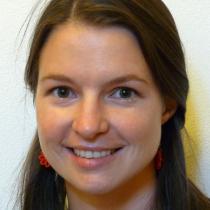CLR person interests, research and publications
Researcher

Research interests
- Geophysical characterization of accretionary and collisional orogenic systems
- Architecture of continental lithosphere with forward and inverse modeling of gravity and magnetic anomalies
- Structural geology and tectonics of orogenic systems
Current research topics
My work is focused on geological interpretation of the Earth's gravity and magnetic fields by studying potential field data combined with structural analysis, magmatic rock geochemistry, petrophysical data and seismics. This multidisciplinary approach constrains the structure of the lithosphere. My research strength is the treatment, the interpretation and the synthesis of large sets of geophysical and geological data in order to model (forward and inverse modeling) the structure of the lithosphere from regional to large scale. The obtained geophysical models contribute to reconstruct consistent tectonic evolution of accretionary and collisional orogenic systems.
Research projects
The Central Asian Orogenic Belt (CAOB) is an accretionary orogen covering one third of Asia. Guy et al. (2014) demonstrate by the correlation between geology and potential field data that the systematic use of lithostratigraphic terranes to define the CAOB is not appropriate.
Selected segments of Euroasian orogenic system are used to constrain relative contribution of contrasting processes of continental construction in collisional and accretionary orogenic systems. Principal objectives of the proposal are: (i) identification of the individual terranes, kinematic analysis of their movements and characterization of deformation style connected with their amalgamation; (ii) estimation of net crustal growth vs. recycling of preexistent crustal material.
On the modern Earth, continental crust is created mainly at subduction zones. Here, release of aqueous fluid from dehydrating oceanic crust causes melting in the mantle wedge and generates the calc-alkaline magmas that evolve into granitoid continental crust. This project aims to understand crustal growth and possible crustal construction mechanisms, using the Mongolian and Chinese tract of the Central Asian Orogenic Belt (CAOB) as an example. The main questions raised here are: What were the cause, rate and timing of continental growth in the CAOB?
